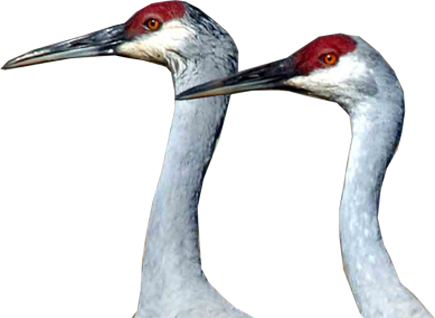Utah Ranchers Unite Partners for Landscape and Community Conservation
West Box Elder County is in the far northeast corner of Utah, just north of the Great Salt Lake. It features large tracts of desert solitude contrasted by high, forested mountains, and represents some of Utah’s best cattle country. Part of the Great Basin, this region hosts key habitat for sensitive wildlife, like Greater Sage-grouse, Boreal toad, and Lahontan cutthroat. And it is here that a small, but dynamic community of people reside, dedicating themselves to the responsible use and conservation of natural resources. West Box Elder Coordinated Resource Management Committee represents stakeholders of private and public lands in this county. They are doing so with a multi-faceted approach that garners the partnership of local ranchers and landowners, alongside state, county, and federal resource managers to work together for projects benefitting livestock, wildlife, and people.
Proactive Planning Prepares County For A Changing Future
Coordinated Resource Management is a model in which stakeholders make decisions by consensus, rather than by traditional voting and majority rule. CRM Committees (CRMCs) have developed across the West to help people manage natural resources in a productive, conservation-friendly, and economical manner, for the long-term. They integrate local knowledge and technical expertise, while taking advantage of group synergy. The West Box Elder CRMC was established to coordinate the different resource management activities of agencies and landowners, and was the ideal forum to address sage grouse when the bird became a priority conservation issue in the West.
This CRMC works across multiple watersheds and covers 1.5 million acres. Few other community-based conservation efforts have occurred at this scale, especially considering the fact that only 400 permanent residents live in the planning area—an average of one person for every 3,750 acres.
“Sometimes not having a lot of people involved can make conservation easier,” said LuAnn Adams, past county commissioner and past Co-chair of the Box Elder CRMC. “But in this area, too few people across such a large landscape makes it difficult to get projects off the ground.”
Yet, the Box Elder CRMC is using this population demographic to their benefit, insomuch as they have crafted a locally based, shared vision for the future. The result was an in-depth CRM plan that reflects the priorities of residents and considers practical long-term needs and strategies. This plan contains a detailed and fascinating description of a western working landscape. It also includes strategies to address countywide challenges and specific actions for community planning and economic development, invasive juniper and weeds management, reservoir and rangeland improvement, and “special-status species” wildlife protections.
Wildlife Has a Seat at the Table
The partners that make up the CRMC intimately understand that wildlife are integral to most current range and agriculture programs and projects. Alan Smith is the Co-chair of the wildlife sub-committee. As a sportsman, he guides the group in developing projects for game species while his Co-chair, Adam Brewerton with the Utah Division of Wildlife Resources, focuses on special-status species. Smith and Brewerton work as a team with ranchers and agency people to dispel the fears and myths that locals have about losing their rights because certain species reside on their land.
“The collaboration we achieve with the CRMC by working with all entities is phenomenal. I’ve never seen this level of unity among so many different groups,” Smith said. “We are seeing the wildlife really take advantage of the project sites we have worked on, particularly in the juniper removal areas and in the places where we have installed remote water sources.”
For example, wildlife researchers confirmed that sage grouse immediately returned to conifer treatment areas. In one case, a radio-marked female sage grouse was documented nesting in a treatment area with active juniper removal taking place.
Considering Bird Habitat Alongside Forage and Water Needs
In addition to work on sensitive species, the group also addresses rangeland condition and invasive species. Invasive juniper and pinyon conifers are a significant challenge for both ranchers and wildlife. These trees outcompete the native grasses that cattle need and limit habitat for sage grouse and other sagebrush birds, like the Brewer’s Sparrow. Since the CRMC formed in early 2013, they have completed nearly 35,000 acres of juniper removal and re-vegetation, much of which was made possible by the Sage Grouse Initiative. Today, you can see large tracks of land in Box Elder County that have had junipers removed and now those vast areas are flourishing with desired perennial grasses and young sagebrush plants. Mule deer depend on these places for winter range and elk have shown up where current residents have never before seen them.
The CRMC is also planning key wetland and riparian improvements that will provide resting, feeding, and nesting sites for migrating birds. Fencing has been put around key springs and off-site water sources have been developed. In the near future, there will be reintroductions of beaver to the riparian areas to rehabilitate freshwater ponds. These efforts help address the extremely limited water supply in western Box Elder County by slowing the spring water runoff, stabilizing the stream banks, raising the water table, and dispersing the water across the landscape.
“The CRMC has enabled federal and state agencies, as well as private landowners to coordinate projects on a landscape scale,” said Bracken Henderson, a Resource Manager for West Box Elder Conservation District. “Conservation thrives in this environment.”
The IWJV views the West Box Elder CRMC as an important example of community-based, landscape-scale conservation in action. We contributed a $15,000 capacity grant to the CRMC in FY2015 to increase their capacity to establish effective communication between their stakeholders and coordinate juniper removal projects, cheatgrass control and revegetation, and beaver reintroduction in pilot areas. We look forward to continuing the partnership with these conservation leaders to achieve on-the-ground conservation outcomes and learn from their successes.

